Table of Contents
Did you know that public-private partnerships (P3s) in Canada’s educational sector have saved the government up to $27 billion across 200 surveyed projects? This innovative model is reshaping how educational institutions operate, blending public oversight with private operational expertise to create efficient and sustainable solutions.
These institutions have evolved from traditional models, embracing a collaborative approach that combines the strengths of both sectors. Legal experts highlight how this shift not only enhances educational quality but also opens new opportunities for students and educators alike.
Historically, Ontario has been at the forefront of this movement, with colleges like Lambton leading the way. Policy changes and the increasing demand for specialized skills have made these partnerships a cornerstone of modern education in Canada.
Understanding this model is crucial for anyone involved in education, offering insights into how these partnerships are shaping the future of learning in Canada.
Introduction: The Rise of Public-Private Partnerships in Canadian Education
The rise of public-private partnerships in Canada’s education sector has transformed how institutions deliver high-quality programs. Over the past decade, these collaborations have grown significantly, driven by increasing international student enrollment and government initiatives. This shift has not only enhanced the quality of education but also opened new opportunities for students and educators.
Policy changes under the Harper, Wynne, and Ford governments have played a crucial role in this evolution. These changes have increased international student mobility, making Canada a desirable destination for education. Legal experts highlight that such partnerships balance public funding with private operational expertise, creating efficient and sustainable solutions.
While these partnerships offer benefits like improved facilities and operational efficiency, they also present risks such as regulatory gaps. Understanding these dynamics is essential for stakeholders to navigate the evolving educational landscape effectively.
Exploring public-private partnership colleges in canada: Definition and Key Concepts
Public-private partnerships (PPPs) in Canada’s educational sector have emerged as a transformative force, blending public oversight with private operational expertise. This model has gained traction due to its ability to deliver efficient and sustainable solutions, particularly in Ontario, where colleges like Lambton have pioneered such initiatives.
Clarifying the Model in Canadian Context
In the Canadian context, PPPs involve contractual relationships between public colleges and private partners, often based in the Greater Toronto Area (GTA). These partnerships are designed to maintain curriculum standards while allowing private entities to manage operational aspects, ensuring educational quality remains high.

Historical Evolution and Current Trends
Historically, PPPs in Canada’s education sector began gaining momentum around 2012, driven by policy changes and increasing demand for specialized skills. Ontario has been at the forefront, with initiatives reflecting a shift towards modern, collaborative educational models. Government reviews highlight how these partnerships enhance efficiency and adaptability, benefiting both students and educators alike.
How Public-Private Partnerships Operate in Ontario Colleges
In Ontario, public-private partnerships (PPPs) have become a cornerstone of modern education, offering a balanced approach between public oversight and private operational efficiency. These partnerships are structured through contractual agreements that outline roles, responsibilities, and financial arrangements between public colleges and private institutions.
Contractual Arrangements and Operational Models
Ontario colleges typically partner with private colleges located in urban areas like Toronto and Mississauga. These partnerships often involve fee-per-student arrangements, where private colleges deliver programs using the public college’s curriculum. For example, St. Lawrence College collaborates with Alpha College of Business and Technology, while Lambton College partners with Queen’s College. Legal experts in Canada highlight that these models streamline operations while maintaining educational standards.
Role Distribution Between Public and Private Institutions
| Public Colleges | Private Colleges |
|---|---|
| Curriculum development and quality assurance | Operational management and student recruitment |
| Academic oversight and certification | Infrastructure and service delivery |
| Compliance with government regulations | Student support and administrative services |
While PPPs offer benefits like improved facilities and operational efficiency, challenges such as quality assurance and regulatory gaps persist. Legal experts emphasize the need for robust oversight to ensure educational quality and compliance with government mandates.

For students and educators, understanding these partnerships is crucial. If you’re seeking legal guidance on employment matters, consider consulting employment lawyers in Winnipeg for expert advice.
Benefits for International Students and Campus Quality Assurance
International students pursuing education in Canada through public-private partnership (PPP) colleges gain significant advantages. These institutions offer streamlined pathways to work permits and permanent residency, making them an attractive choice for global learners.
Pathways to Work Permits and Permanent Residency
Graduates from Ontario’s PPP colleges are eligible for the Post-Graduation Work Permit Program, allowing them to work in Canada for up to three years. This experience is crucial for those seeking permanent residency through programs like the Canadian Experience Class. Legal experts in Canada emphasize that such opportunities enhance the appeal of PPP colleges for international students.
Ensuring Consistent Quality and Academic Standards
Quality assurance is a priority in PPP colleges. They maintain rigorous academic standards, ensuring curricula are updated and approved. For instance, programs in technology and business management are designed to meet industry demands, providing students with relevant skills. Recent surveys indicate high student satisfaction, reflecting the effectiveness of these quality assurance measures.

September intakes are a key enrollment period, aligning with the academic cycle and offering international students a structured start. For those interested in legal aspects of education or employment, consulting legal experts can provide valuable insights and guidance.
Navigating Government Policies and Regulation
Navigating the regulatory landscape of public-private partnerships in Ontario requires a clear understanding of policy shifts and their implications. Over the past decade, the province has seen significant changes in how these partnerships are governed, particularly under the Wynne and Ford governments.
Policy Shifts and Regulatory Framework in Ontario
Recent policy changes have introduced both opportunities and challenges. The Ford government’s approach has been more lenient, aiming to streamline operations while maintaining educational standards. However, this shift has also raised concerns about quality assurance and regulatory gaps.
| Government | Policy Approach | Impact |
|---|---|---|
| Wynne Government | Stringent regulations and quality monitoring | Enhanced oversight but limited flexibility |
| Ford Government | Reduced regulatory burden | Increased operational efficiency but potential quality risks |
Insights from Canada Legal Experts on Compliance
Legal experts emphasize the need for improved regulatory resources to protect students. David Trick’s report highlights the importance of stricter quality monitoring and shutting down low-quality partnerships. These insights underscore the balance needed between operational efficiency and educational excellence.

For those seeking legal guidance on these matters, consulting experts at Canada Legal Experts can provide valuable insights.
A How-To Guide for Selecting the Right PPP College
Choosing the right educational institution is a critical decision, especially when considering models that blend public oversight with private operational expertise. This guide provides actionable steps to help prospective students make informed choices.
Steps to Evaluate Educational Quality and Accreditation
- Assess accreditation standards to ensure the institution meets provincial government regulations.
- Review quality assurance reports and documentation to gauge academic rigor.
- Consider expert recommendations, such as legal experts advising on compliance with enrollment limits and operational guidelines.
Understanding Partnership Terms and Tuition Structures
Tuition structures vary, often reflecting the delivery model’s efficiency. For instance, the UC-Merced project demonstrates how partnerships can expand campus capacity, impacting tuition arrangements. Legal experts suggest verifying compliance with enrollment limits to avoid financial penalties.

By focusing on these criteria, students can select institutions that offer quality education and clear delivery models, ensuring a beneficial educational experience.
Case Studies and Examples of Successful PPP Initiatives
Ontario has emerged as a leader in successful PPP initiatives, offering valuable insights into effective collaboration between public and private entities. One notable example is Lambton College’s partnership with Cestar College, which has achieved remarkable results in student satisfaction and graduate employment rates.
Ontario Success Stories and Institutional Examples
Lambton College’s collaboration with Queen’s College exemplifies how PPP models can enhance educational outcomes. This partnership has not only improved operational efficiency but also ensured high academic standards, as evidenced by recent quality assurance surveys.

Comparative Analysis of Different Partnership Models
| Partnership Model | Operational Experience | Fee Structure | Quality Resources |
|---|---|---|---|
| Lambton-Cestar | Proven track record in managing day-to-day operations | Fee-per-student basis | Robust infrastructure and support services |
| Alternative Model | Focus on specialized program delivery | Fixed tuition fees | Emphasis on technology integration |
Such comparative analyses highlight the strengths of each model, offering institutions and students a clear understanding of the benefits each approach provides.
Conclusion
In conclusion, the evolution of public-private partnership colleges in Canada offers a blend of opportunities and challenges. These institutions have grown significantly, driven by policy shifts and the demand for specialized skills, with Ontario leading the way. Legal experts play a crucial role in ensuring that these partnerships maintain high educational standards and comply with regulatory frameworks.
Understanding the detailed agreements and regulatory structures is essential for both students and educators. Canada legal experts emphasize the importance of transparency and accountability to uphold the quality of education. The guidance provided in this guide helps prospective students make informed decisions when selecting an institution.
For international students, these partnerships offer streamlined pathways to work permits and permanent residency, enhancing their educational experience. Quality assurance measures ensure that programs remain relevant and meet industry demands, benefiting both local and international learners.
However, challenges such as regulatory gaps and funding disparities persist. The ministry’s role in overseeing these partnerships is vital to address these issues and ensure equitable resource allocation.
As the educational landscape continues to evolve, ongoing monitoring and continuous improvement are necessary. Prospective students and educators are encouraged to explore these opportunities further, making informed decisions that align with their goals and aspirations.
Ultimately, the PPP model in Canada’s educational sector presents a balanced view, offering insights into how collaboration between public and private entities can shape the future of education. Stay informed as this system continues to develop, providing updates and innovations that enhance educational accessibility and quality across the country.



